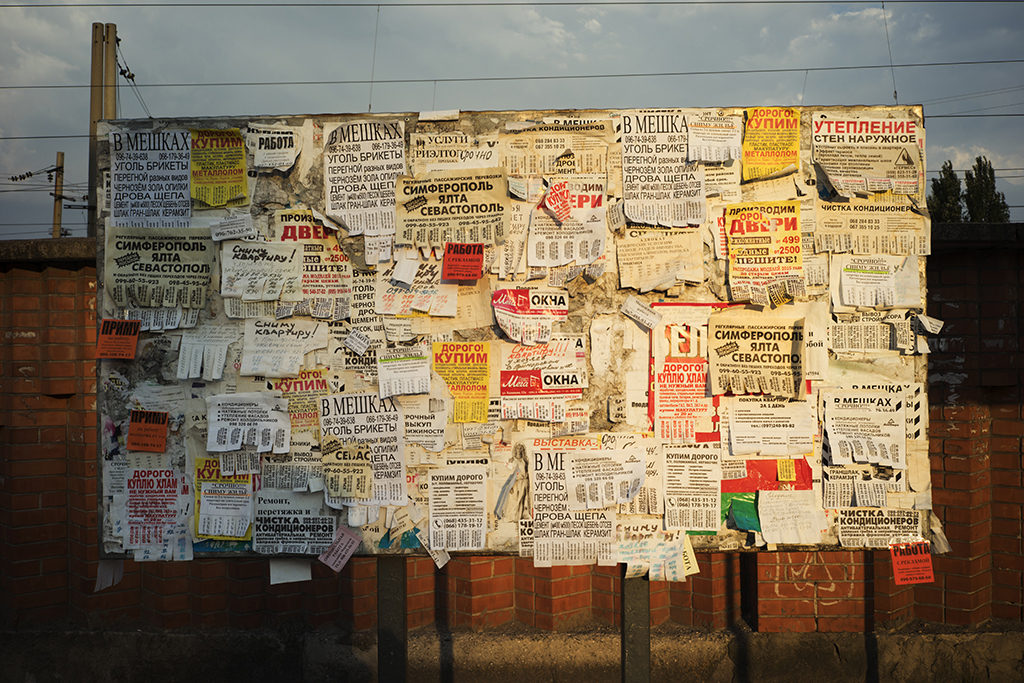
The Ukrainian city of Mariupol sits 20 km from the front line between separatists and the Ukrainian military. It is a city at peace, but close enough to hear the war. Fighting between the Russian-backed separatists and the Ukrainian military has escalated over past months, and residents in Mariupol hear mortars and rocket fire when the wind blows from the East, from the front-line towns of Shyrokyne and Novotroitske.
The Ukrainians have made defense of Mariupol their line in the sand: it is a port city with crucial transport infrastructure, access to the Sea of Azov, and two huge steel plants as well as assorted other heavy industries. It is also the city the Russians would need to capture in order to build a land bridge to Crimea, which would secure the strategic viability of their claim to that territory.

I am spending a long week in Mariupol, walking the city, photographing, and gauging people’s attitude toward the conflict, their own circumstances, and their understanding of the nature of the threat. I want to see if I can explain and depict the psychological pressure and uncertainty generated by proximity to the front, and see how those pressures might be evident in the landscape.
This is a war in which the interplay of informational conflict and physical violence is especially evident, in which disinformation and propaganda muddle motives, deny unmistakable violence, and seek to confuse both fighting forces and key populations. This unusual war has witnessed a flourishing of evidentiary traces from online sources, as well as the possible manipulation of that evidence. It is a war in which confusion is clearly a strategic element, rather than just an effect. The rhetoric of the fog of war, in other words, is intended to legitimate the idea of information warfare. In just this way, the rhetoric of a “hybrid war” as a new form of war—even though it is not new—creates an environment in which the international norms and laws of war can themselves be challenged.
Before the war, residents of Mariupol largely supported Russian culture and language, and briefly participated in the separatist effort in 2014 and 2015. This part of Ukraine overwhelmingly supported Victor Yanukovych in elections and local police participated in his bid to hold power. At the same time, the effects of the war, and of politics on the lives of people is hard to conceal. Being part of Russia might have been attractive, but affiliation with a pariah semi-state not so much. The result is a weariness, a fugitive state of concealment and reticence.

Many residents now recognize the difficulty of associating with the separatist movement, and the conflict and isolation that would result. Ukrainian military, together with militias, control the city and the airport, and the military has reinforced the front. The Russians still have a much stronger military, but it is no guarantee that they would have support from the population, or an easy victory over a Ukrainian force that has had time to learn how to fight.

Mariupol today is calm; its streets are quiet. It might be hyberbolic, and certainly a cliché, to say that the city is holding its breath. It is notable, however, that Russia has chosen the time of the Olympics for their past two significant invasions, of Georgia in 2008 and of Crimea in 2014. Increasing transfer of weapons, escalation of violence on the front, and a rhetorical line that the ceasefire is functionally dead are all positions that create a sense of possibility, and then permission, for renewed conflict. And whether or not Russia does decide to invade, these moves create tactical space for them – either preparation for and justification of an invasion, or a stronger hand at the negotiating table, and another move on the geopolitical front, in which Russia tests resistance to its assertion of regional dominance.
